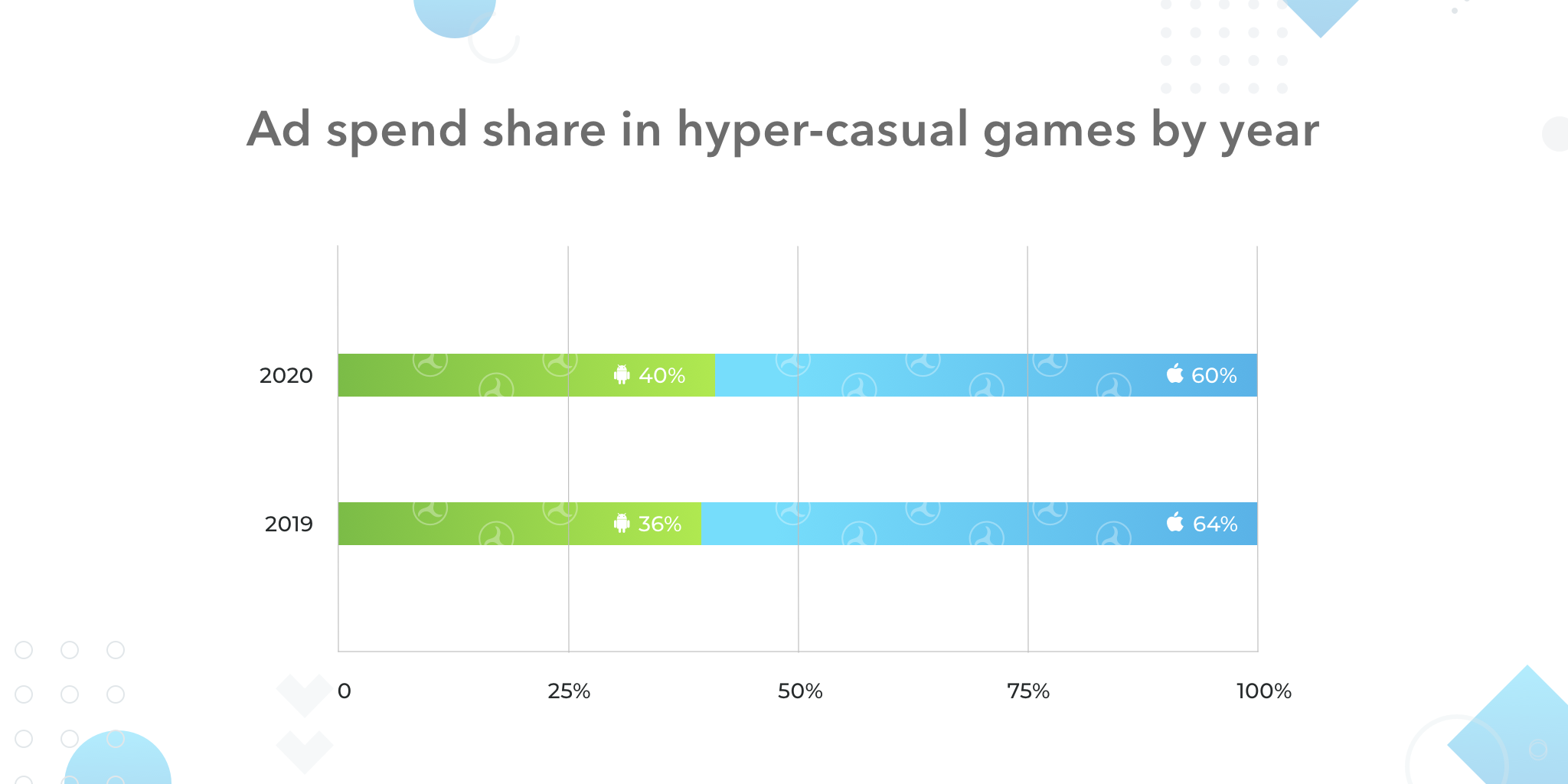After the release of iOS 14.5, in which Apple turned off IDFA by default, advertisers began to redistribute their advertising budgets in favor of Google Play.
This was told by the Tenjin data attribution service. As Roman Garbar, its marketing director, writes in the company's blog, if in April iOS accounted for 52% of all advertising spending in mobile, then in May — after the update was released — the share of the platform decreased to 48%.
Distribution of advertising expenses before and after the release of iOS 14.5
In recent years, there has been a trend in the market to reduce Apple's share. For example, in 2019, App Store marketing accounted for 64% of all advertising spending on promoting hypercausal games, and in 2020 it was already 60%.
Distribution of advertising expenses in the niche of hyper-casual games (2019-2020)
It can be said that the situation with IDFA has significantly accelerated the existing trend. However, it was only after the introduction of iOS 14.5 that Android's share turned out to be larger than Apple's OS for the first time.
Tenjin believes that the growth of advertising budgets on Android will not stop. Publishers will increase spending on marketing on Google Play. This, in turn, will lead to an increase in CPI on the platform. The latter can be a catalyst for the transition of a number of companies to new Android platforms.
At least, Garbar writes that now, until advertisers have seen an increase in the cost of traffic on Android and have started looking for new ways to save their budget, is the ideal time to start working with alternative app stores where it is possible to gather an audience inexpensively.
In this regard, Tenjin announced that it now supports attribution of data from alternative Android stores. The service will be able to track installations, ROI, LTV and other metrics on them.
The solution, according to the company, is quite flexible and supports, among other things, Chinese Android stores. Recall that most of the Chinese mobile market is on Android. To understand: in January-March, iPhones accounted for only 13% of sales in the local smartphone market.


